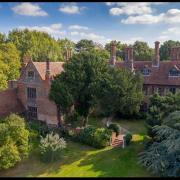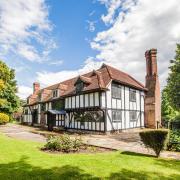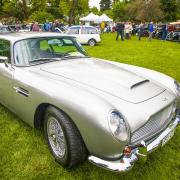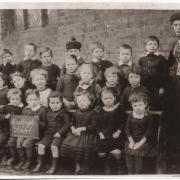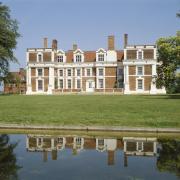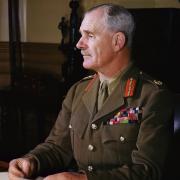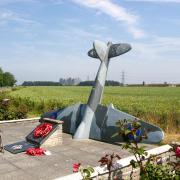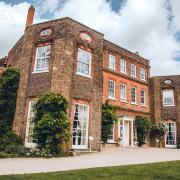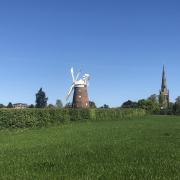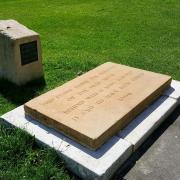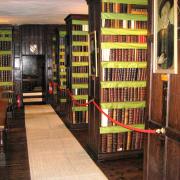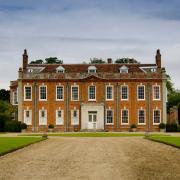Nestled between Benfleet and Leigh-on-Sea and overlooking the Thames Estuary, the ruins of Hadleigh Castle hold many secrets – as Sybilla Hart finds out...
When I first clapped eyes on the ruins of Hadleigh Castle, located on the shores of the Thames Estuary in South Essex, I did not realise that we could attribute a dollop of the blame to none other than the county’s infamous rogue, Richard Rich. Rich played an important role in the dissolution of the monasteries as instructed by King Henry VIII and was Lord Chancellor to the young King Edward VI in the mid 16th century.
The historian Hugh Trevor-Roper famously said that Rich was a man of which ‘no one has ever spoken a good word.’ Rich had the audacity to tear down the castle’s bricks in order to sell them on, but to be fair, we can’t blame it all on him as the castle was built on a soft hill of London clay, which had never exactly helped Hadleigh Castle’s cause. It’s true to say that the medieval castle had long been a victim of subsidence before Rich started selling off its masonry. Having bought the castle (now a scheduled monument) for £700 in 1551, Rich, not content with the sale of the castle’s bricks, erected a tiled hearth in the great hall, which he used to melt down the valuable lead to also sell.

Long before Rich’s time, the land where Hadleigh Castle would be built was gifted to Hubert de Burgh in 1215. De Burgh was an older mentor-like figure to the much younger King Henry III, King John’s heir. Hubert de Burgh was custodian of Windsor and Dover Castles, and as historian David Ross of Britain Express describes him, de facto ruler of Britain. De Burgh used Hadleigh Castle as a statement of his wealth and power, but unfortunately he had to surrender it in 1239 when he had a falling out with the new King Henry III.
Hadleigh castle was built out of Kentish ragstone cemented by mortar containing lots of seashells, mainly cockle shells from neighbouring Canvey Island. The castle would have been built in an octagonal shape originally and the setup sounds absolutely delightful: terraced gardens constructed on the south side overlooking the estuary and quite possibly vineyards too. A tidal windmill was built nearby for the necessity of making bread.

When de Burgh fell out with King Henry, he had to hand back his lands including Hadleigh Castle. Henry III did not spend much time there so in the mid-13th century the castle fell into disrepair. It was later gifted to Queen Eleanor, the wife of Edward I, daughter-in-law of Henry I. Some improvements were made at the castle but it appeared at this stage that only the mill, the lifeblood of the estate, was properly maintained. A solar complex (the family’s private residence and quarters) was erected, but this appears to have fallen victim to subsidence.
When Queen Eleanor died, Edward I remarried Queen Margaret, who was also given the castle just like Queen Eleanor before her. Queen Margaret insisted on Hadleigh Castle having considerable repairs lavished on it. It probably needed them; her husband Edward I is said to have only visited Hadleigh Castle twice when he used it as a hunting lodge. His son, Edward II, took a closer interest in the castle, docking his royal barge at a wharf close by and often travelling to the castle from London up the Thames. He also embarked on some very substantial building works, as well as attempting to address the ongoing subsidence issues. During Edward II’s reign, the armoury room at the castle was often guarded by a garrison of guards and there was even a prison on the premises.

Edward III, Edward II’s son, acquired Hadleigh Castle in 1330 from his mother, Queen Isabella of France. She famously deposed her husband Edward II in 1326 and has been cast in history ever since as a femme fatale extraordinaire. This act amounted to the first ever abdication of an English King.
At first, Edward III did not take much interest in Hadleigh Castle, but in 1360 it is said that he spent a fortune, some £2,200, on repairs and building works. Edward III commissioned new royal lodgings and rebuilt the eastern side of the castle in its entirety. A drawbridge and a chapel were also added by the King as well as the iconic twin drum towers that are still standing today. These towers were forever immortalised in 1814 thanks to the famous artist John Constable in his painting Hadleigh Castle. Later on in Georgian times, tax men would look for smugglers in these very towers.

Edward III recognised the strategic importance of the geographic position Hadleigh Castle held; whether that was specifically in relation to the Hundred Years’ War with the French is something that is disputed by historians. Some are of the opinion that the castle served more as a retreat for the King, and its strong geographical location was incidental. Edward III built a twin castle of sorts in Kent called Queenborough Castle, which along with Hadleigh Castle stood proudly on the Thames Estuary. Between both castles they would have communicated a strong sense of power.
Though Edward loved Hadleigh Castle, sadly his heirs did not share his enthusiasm, and it was rented out post his tenure and eventually sold to the tyrant Lord Rich. William Booth eventually bought Hadleigh Castle on the behalf of the Salvation Army in the 20th century; it is now owned and managed by English Heritage.





